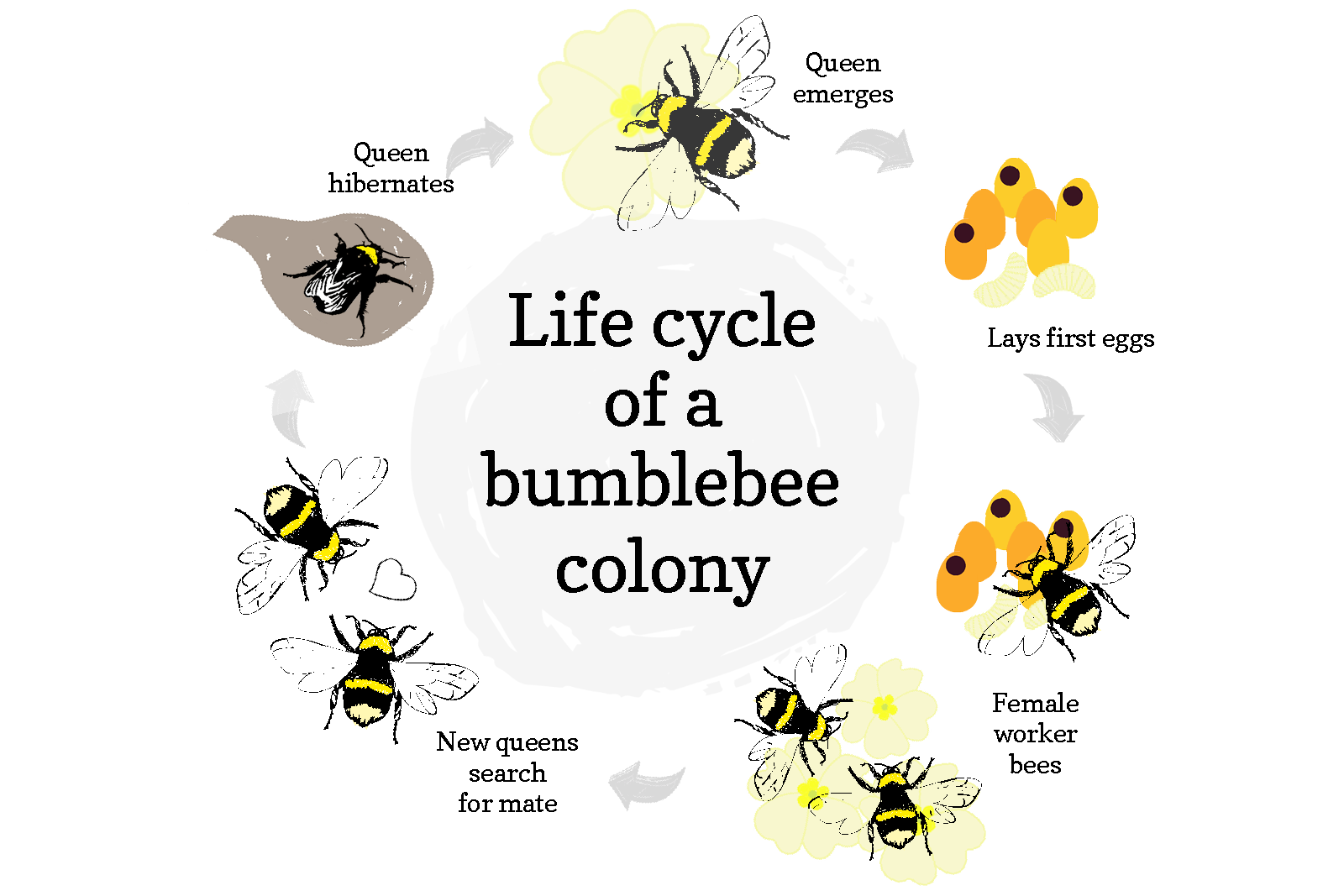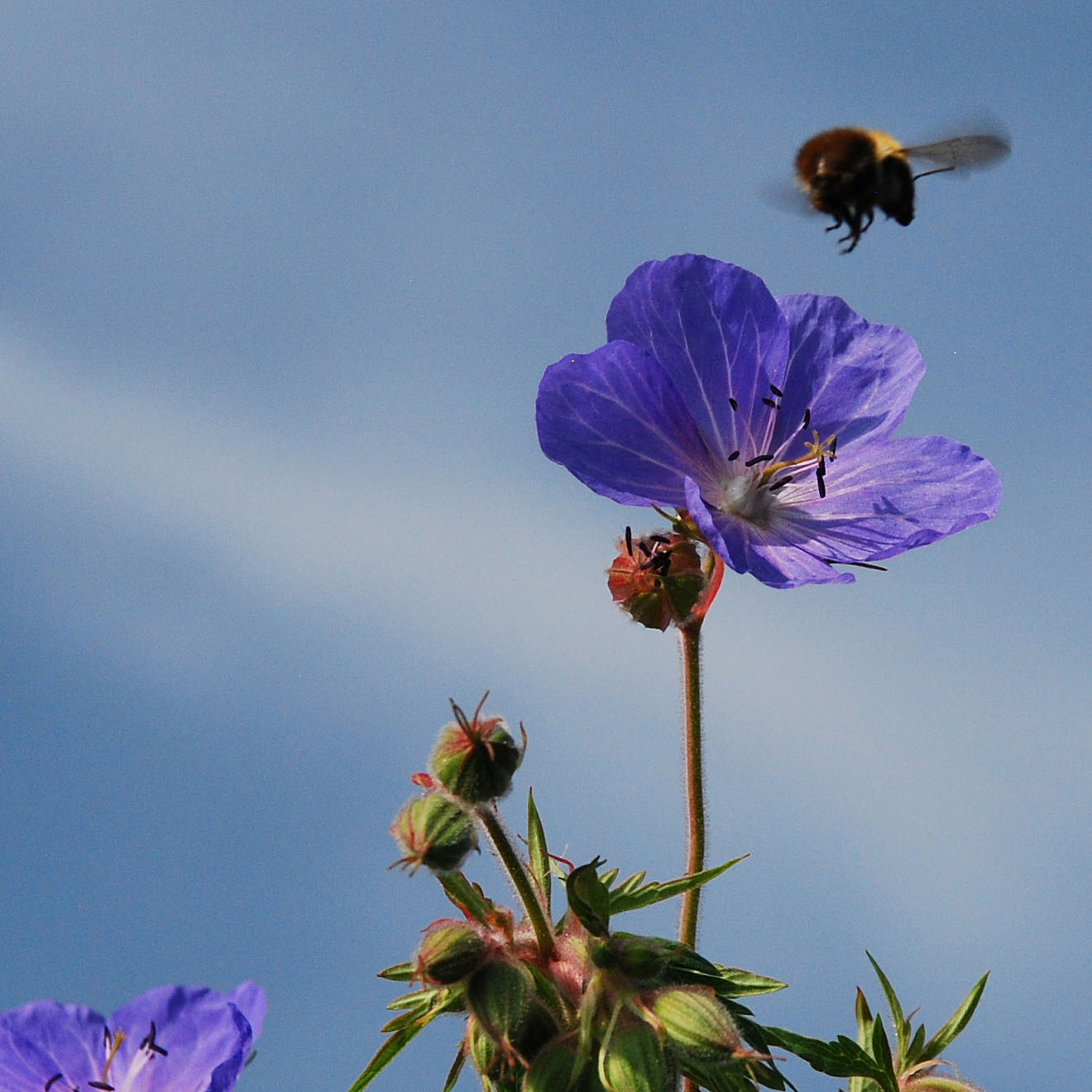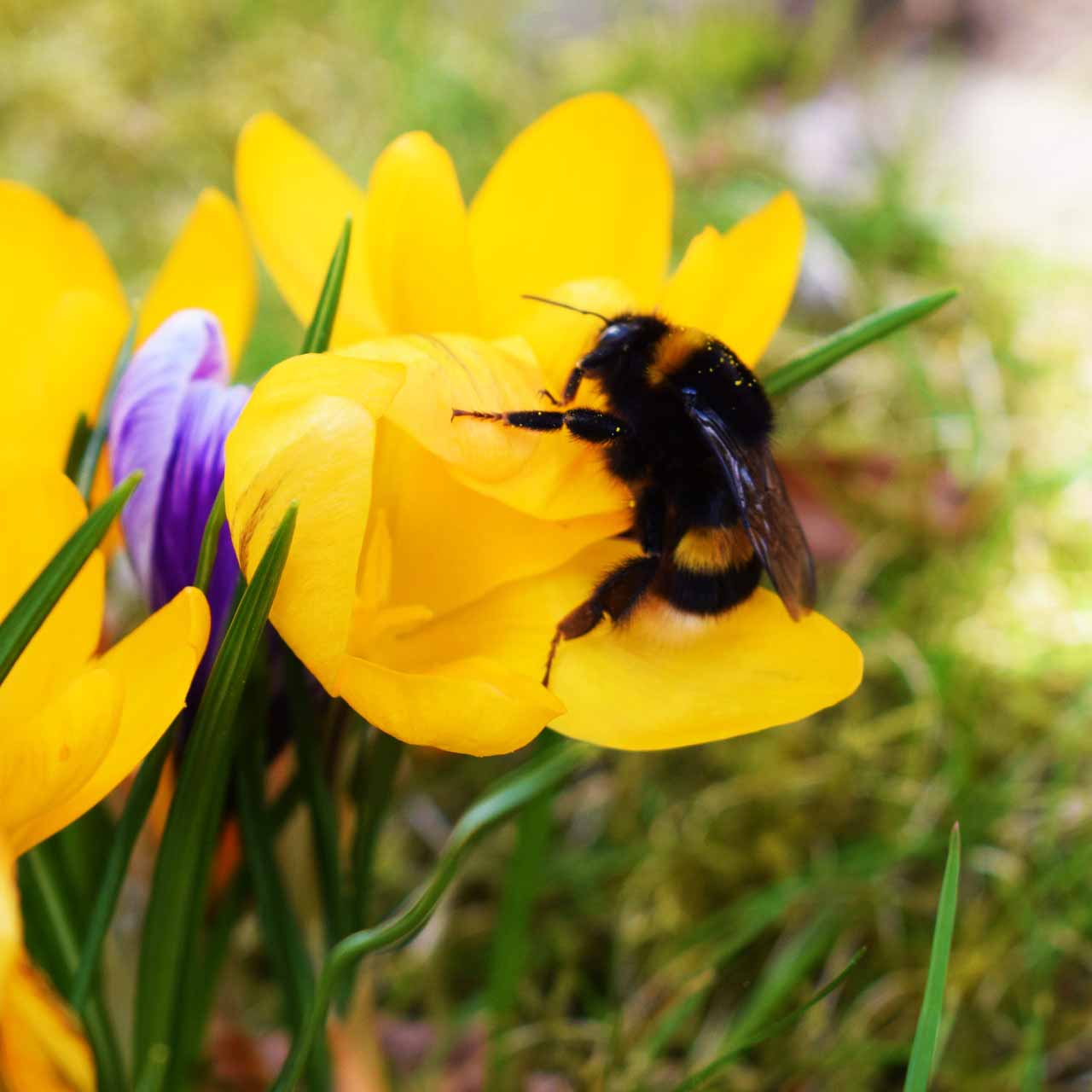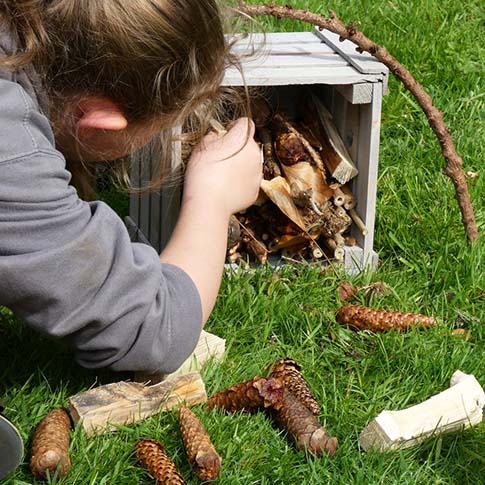Bumblebee life cycle
For most people, the bumblebee life cycle is a bit of a mystery. We see them buzzing around our gardens and feeding on flowers, but how much do we really know about the rest of their lives? Bumblebees are in fact social insects and have an interesting life cycle, much of which is hidden from us, as it takes place underground.

Queen bumblebees emerge from hibernation
Queens Bumblebees are rarely spotted in winter, but in spring, rising temperatures awaken queen bumblebees from their slumber. They have spent the winter hibernating underground and emerge hungry in spring, feeding on the nectar of early flowering plants to give them energy.
Queens lay their first eggs
These emerging queens begin looking for a nesting site, usually an abandoned mouse hole or similar. Once a queen has found a suitable site she builds a pot from wax, which she fills with nectar. She also forms a mound of pollen and wax and lays her first brood of eggs. Sipping from the nectar-pot gives her enough energy to remain underground incubating the eggs for several days until larvae emerge. These larvae are fed on pollen and nectar collected from nearby flowers by the queen and after around two weeks develop into adult bees.
First brood of female worker bees
This first brood of bees are all female workers. Some workers will forage for nectar and pollen to feed the next brood, while others remain underground, cleaning and guarding the nest. From here on, the queen will not leave the nest.
In late summer the queen will stop producing workers, instead laying eggs that develop into males and new queens.
Male bees and new queens search for a mate
The male bees do not contribute to running the nest nor do they collect pollen, instead they leave in search of a mate, a challenge in which most of them do not succeed. The new queens also leave the nest to mate.
New queens hibernate
Once mated, the new queens feed heavily on pollen and nectar, storing the energy as fat to provide energy during a long hibernation. While these new queens will survive until the following year by hibernating, the rest of the colony will not survive the winter and die naturally in autumn.
What's that bee?
Want to learn more about identifying bumblebees? Check out our tips for Identifying Bumblebees or join one of our Bumblebee ID workshops this summer.
Bumblebee challenge!
Spotted an unusual bumblebee? Share your sightings and photographs with us on Facebook or Instagram.
Help save our bees
Our Bee Together project aims to bring people together to help reverse the decline of wild bees and other pollinators. Want to help? Bee Together









